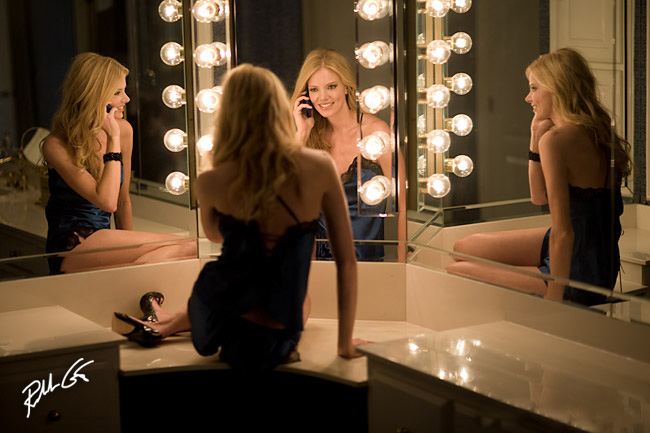The Claude Shannon and Warren Weaver’s 1949 Communication Model Helps Photographers

Communication skills are keys to great photography.
The greatest photographers in the world have three things in common, a creative eye, the comprehension of their equipment and the ability to communicate both to their subject and the intended audience—or as I like to say, the three C’s of photography, creativity, comprehension and communication. At some point in our lives, we often hear that communication or the lack of communication is the root of all problems, so I will focus on communication since most photography involves some sort of dialogue between a photographer and a subject as well as the intended audience.
First, in order to better understand communication, a photographer should take from what is known as the “mother of all models,” the Claude Shannon and Warren Weaver’s 1949 Communication Model. This communication model is composed of the following elements—a sender (information source), a message, a transmission, a channel, a receiver and a destination. In this mix, you also have the concept of noise, or interference.
Photographers are the information sources that transmit visual and verbal communication to their subjects. A photographer’s voice is the transmitter outlet, and like all transmitters, if that outlet fails, the message will not be heard as it was intended and the results usually have a negative impact on the subject. Subjects also subconsciously study signals from the body language of the photographer that can impact their perceptions about the photographer’s professionalism and abilities.

Dilara was photographed with a SUNBOUNCE PRO fitted with a SPARKLING SUN fabric.
The channel is the photography session and if that session experiences noise, or distractions, such as the phone ringing, clock-watching because the subject or photographer has other commitments, etc., the message will suffer its effect. If a photographer is having problems with equipment, usually because it was not checked before the subject arrived, this provides a distraction that will impact the confidence the subject has in the photographer and will impact the shoot. An unconfident subject will produce a tight face and without the corners of the eyes in harmony with the corners of the lips, there is no face or real photograph. The photographer and the subject are merely left with a picture of an uncomfortable subject.
The subject is the receiver. If the receiver does not accept the channel, say the subject doesn’t like the location of the photo session or the props, clothes, etc., then the receiver and the sender will experience interference and the entire photo session becomes a failure.
The destination is the final photographs, not pictures; anyone can take “happy snaps,” but few photographers can create photographs. In order to produce a great photograph, the subject and the photographer must arrive at the same destination or conclusion.
Lack of communication or miscommunication is usually the root of all problems and it’s not any different in photography. Think, communicate, then shoot.
Communication doesn’t start the moment a photographer picks up their camera, it starts the first time any contact is made with the potential subject whether it be by phone, email or in person. Communication, like rapport, is ongoing from the first contact to the photo session itself and down to the delivery of the final images along with any follow-up. It is imperative that photographers are careful with the words and tone they choose when they communicate.
Photographers should understand that emails are printed words and often sound harsher than spoken words. With emails, there is no verbal or visual tone to help decode the actual intention of the message. The right tone or inflection of another person’s voice, often helps convey a message more clearly than if the words were merely printed. A printed word without clarification can create noise that will cause the subject (receiver) to shut down, while the right words or vocal tone can weave clear channels of reception. Plus, emails normally don’t allow us to view body language, another form of visual communication from the sender to the receiver.
As an example, when you physically talk to you subjects before a shoot, it’s best to sit down where you’re directly across from them. This posture places you at the same eye-contact level as your subject. Avoid standing. If your subject sits during a conversation, do not give the appearance you’re looking down upon them in conversation. While photographing your subject, shoot from a lower position, usually bellybutton, which gives your subject the feeling they are upon a pedestal, not to mention, lower angles are more flattering for most people.
Ultimately as photographers we must be careful in what we say, when we say it, how we say it and where we say it, when communicating to our subjects. Like a doctor practicing great beside manners with a patient, a photographer must practice professionalism when communicating with a subject and follow the concepts of the Claude Shannon and Warren Weaver’s communication model to help ensure the photographer will not become a problem to their subjects.



